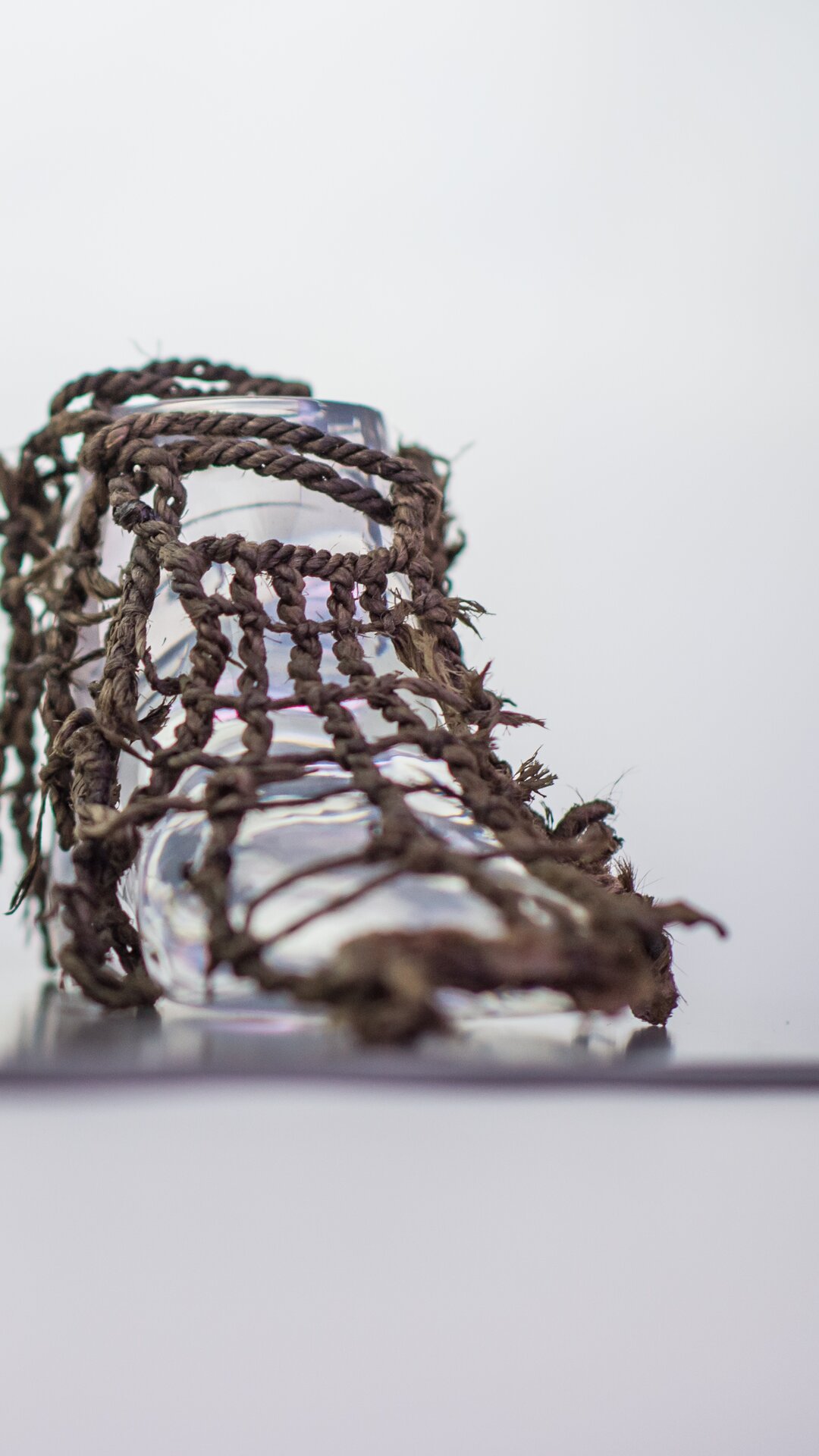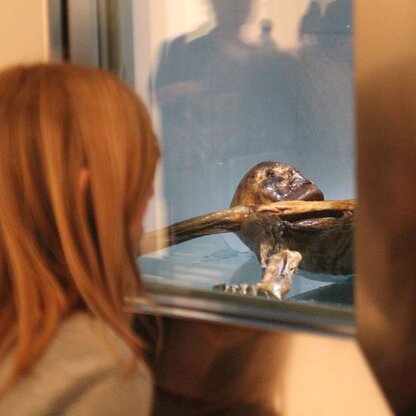ICEMAN
Ötzi's clothing
The clothing was practical and functional. Ötzi’s clothing was made from hide, leather and braided grass, affording him protection from the cold and wet.
Ötzi was fully clothed when he died. His clothing was damaged by wind and weather when the ice melted and was also badly affected by the unorthodox way in which his body was recovered.
His clothing was made solely from leather, hide and braided grass. It was stitched together with animal sinews, grass fibres and tree bast. No wool or woven textile was found. Unfortunately, there are no comparable items from Ötzi’s era, so we don’t know whether he was wearing traditional everyday wear or special clothing. In any case, Ötzi was well prepared for life in the wilderness. His garments, practical and functional, afforded protection from the cold and wet.
Restoration
The Romano-Germanic Central Museum in Mainz, Germany was charged with restoring Ötzi’s clothing. Following their recovery, it was important to catalogue the numerous leather and hide fragments. The fragments were then preserved and pieced together.
Hide coat and grass mat
Ötzi’s hide coat reached almost down to his knees, covering his upper body and thighs. The coat was made from light and dark strips of goat and sheep hide stitched together with animal sinews. Ötzi wore the coat with the fur on the outside. Unfortunately, the sleeves did not survive. Since no recognisable fasteners were found, the coat was probably held closed with a belt. The coat had been in use for a long time, because the inside was very dirty, and some torn seams had been repaired with grass fibres – probably by Ötzi himself.

Grass cape or mat
Remnants of a woven grass mat were found during examination of the excavation site. The mat, made from alpine swamp grass, was initially thought to be a grass cape. This interpretation is now highly debatable, and today it’s believed that it was more likely to be a mat which Ötzi used to protect himself from the rain, or it was part of a backpack.

Leggings, loincloth and belt
Ötzi’s “trousers” consisted of two separate leggings approx. 65 cm in length. They were made from strips of domestic goat. The tops of the leggings were reinforced with leather strips and were knotted onto the belt with an additional leather strip. At the bottom of the leggings were loops that were fastened to the shoes. The leggings had been worn for some time and had been repaired in several places.

Ötzi’s underwear
Ötzi wore a loincloth made from narrow strips of sheep hide stitched together. It was originally a 100 x 33 cm piece of hide worn between the legs and fastened with the belt.

Belt with sewn-on pouch
The belt consisted of a calfskin strip 4 to 5 cm wide. It was probably around 2 metres in length and would have been wrapped twice around the hips. Or there were two separate belts – one to keep the loincloth in place and the other to hold the coat closed. Another leather strip was stitched onto the belt to make a small pouch. This belt pouch contained tinder fungus, a scraper, a boring tool, a bone awl and a flint flake.

Shoes
After recovery, the mummy still had the right shoe on its foot, later removed for restoration. Of the left shoe, however, only the mesh part remains. Ötzi's footwear consists of several layers: the inner shoe is made of linden book mesh, which held the dry grass padding in place with a thermal insulating function. The outer shoe (upper) is made of deerskin and, like the mesh, is sewn to the sole, which is also made of leather but with the fur facing inward. The shoe was tightened to the foot and closed by raffia strings. Experiments with faithfully reproduced copies of these shoes have shown that they can be comfortably used even for quite long distances. They also keep the foot warm, but offer little protection against moisture. It was probably necessary to replace the wet grass padding from time to time.

The bearskin cap
A bearskin cap was uncovered during the archaeologic excavation. Pieces of bearskin had been stitched together to form a hemispherical shape. A chin strap held the cap in place.







